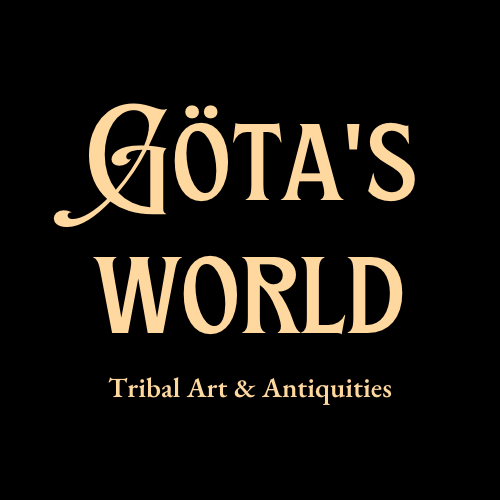Songye Power Figure Nkisi
Songye Power Figure Nkisi
Couldn't load pickup availability
Songye people, early to mid. 20th century, Democratic Republic of the Congo, Central Africa
Magnificent, imposing standing Songye power figure, nkisi, is the joint creation of a skilled sculptor and a trained ritual practitioner. Finely carved from a single piece of hard brown wood, dyed black and covered with sacred spiritual ingredients (bishimba) of seeds, horns, fiber and hide. The head is formed in typical Songye form. The delicate face has sensitively rendered features, with large coffee-bean shaped eyes closed beneath arched eyebrows. The small nose is wide and flat. The small, rectangular mouth and angular chin are characteristically protruding. The ears are small and and recessed. The sturdy neck is cylinderical and embellished with large seed pot necklace. The shoulders are wide, the arms bent and the hand rest on both sides upon the forward bulging abdomen with a protruding navel, a sign of well-being and procreation. Around the figure's hips and chest is a band made of antelope hide and animal skin which seems to have had fur but this has now largely worn away. Short, bent and apart, the legs step with big feet on a circular shallow plinth carved continuous with the rest. A small Dik Dik (Madoqua sp.) horn, inserted upside down, projecting from the top of the figure's head and refers to the wisdom of the elders.
The Songye people inhabit a vast territory between the Sankuru and Lubilash rivers west and the Lualaba river in the east, vast group of villages can be found in Kasaï-Oriental, Katanga and the Kivu Provinces. Divided into thirty-five subgroups the c. 150,000 Songye people are governed by a paramount chief (called Yakitenge) assisted by elders (bakulu), ministry of elders (bubikale), nobles (bilolo) and the innumerable secret societes. Their history is closely linked to the Luba-people (Baluba), to whom the Songye are related through common mythical ancestor known as Kongolo.
The people of Songye believe in a single god, Efile Mukulu, a god acknowledged as supreme being, a divine entity, a progenitor of cosmic bodies and elements, and creator of man. Efile brings into existence eight children: the sun (nguba), the moon (mwenji), the star (lukenene), water (mema), fire (kapia), the wind (lupapi), the rainbow (nkongolo) and finally the earth (kabea ka musongo). However, the Efile Mukulu is not praised as much as ancestral spirits. Much attention is focused on familial ancestors, to whom sacrifices are made to encourage the well-being of the individual and the family. The secret society of masked men is called Bwadi bwa Kifwebe. In the community, these men were known for their use of witchcraft (buki or buci) and magic (masende). Buci is witchcraft, as an internal force, is believed to be in the heart or stomach, while masende or sorcery is external and rests in eyes. The Bwadi bwa Kifwebe maintain balance within the community by conducting masquerades, rituals and rites as initiation rituals, circumcisions and funerals.
Most traditional figural sculpture of the Songye is nkisi (pl. minkisi, called also mankishi). Minkisi are spirits of the dead that can influence the world of living. Typically, each community will have central nkisi figure as will individuals within that community. It is kept in a hut of its own (shibo ya bwanga) and it is used to deal with communal concerns, such as crop failure, widespread illness, witchcraft, sorcery, or territorial disputes. All minkisi are assigned a special guardian (nkunja or kunca), either elderly man or an women. He or she is the interpreter who receives messages from the nkishi through dreams, and who gives evidence of the intervention of evil spirits through states of possession. Individuals make requests to ancestors through the personal nkisi figures. The power of minkisi depends on the spiritual ingredients (bishimba), created by the spiritual healer and sculptor (nganga) and placed within on the figure. Usually bishimba is concealed within the abdominal cavity of the figure, tied around the waist, or in a horn set in the top of the figure's head. The Songye regarded the wood figure as merely a shell, activated to full power only by the addition of the bishimba, composed of sacred animal, plant, and mineral substances, including feathers of a hawk (kabemba), teeth or claws of a lion (ntembve), scales of a dangerous snake (nsanci), bones or flesh of someone who commited suicide, hair and nails of an epilectic or albino (nsaka), umblical cords from twins etc. Special ingredients have unseen symbolic meaning, such as earth from the footprint of an elephant, or material from a tree which has been struck by lightning (tufi twa mpeshi).
Excellent condition. Age-related heavy wear and signs of significant ceremonial use. Parallel split in wood running across the figure. Small chip. Exceptionally fine glossy black patina. Traces of libations and sacrificial offerings. Size approx. 27,0cm x 9,0cm x 8,2cm (excluding the modern base).
Provenance: Swedish private collection
For a similar examples see:
Power Figure (nkisi), New Orleans Museum of Art, Accession Number: 97.159 (https://noma.org/collection/power-figure-nkisi-2/)
Male Power Figure (nkishi), Birmingham Museum of Art , Accession Number: 1989.64 (https://www.artsbma.org/collection/male-power-figure-nkishi/)
References and further reading:
Reviewing Power, Process, and Statement: The Case of Songye Figures, Dunja Hersak, African Arts, Vol.43, No.2, pp.38-51, Published UCLA, Summer 2010.
On the Consept of Prototype in Songye Masquerades, Dunja Hersak, African Arts, Vol.45, No.2, pp.12-23, Published UCLA, Summer 2012.
Community Poer Figure: Male (Nkisi), Yaëlle Biro, The Metropolitan Museum of Art, 2018.
Songye, Art & Life in Africa, University of Iowa Stanley Museum of Art.
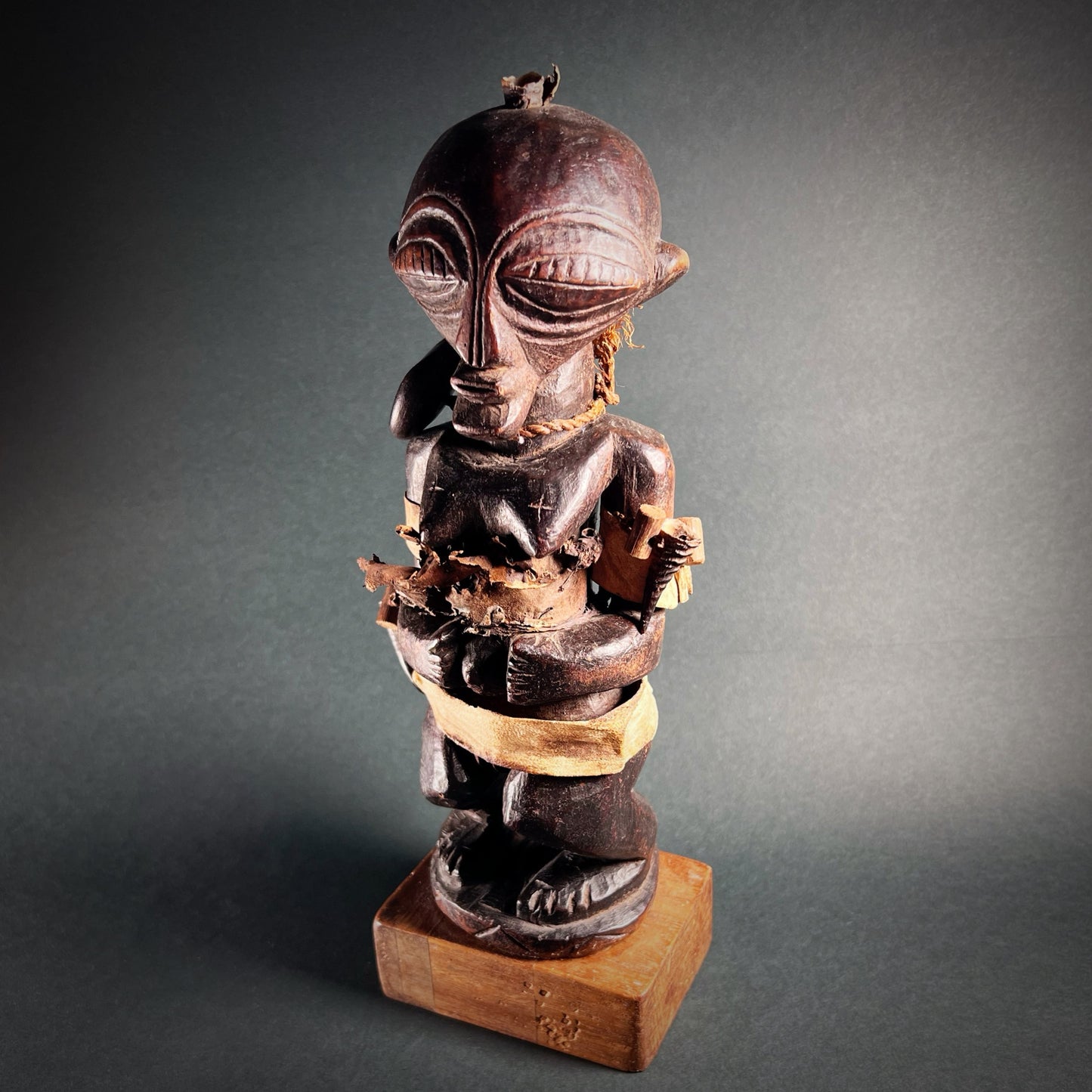
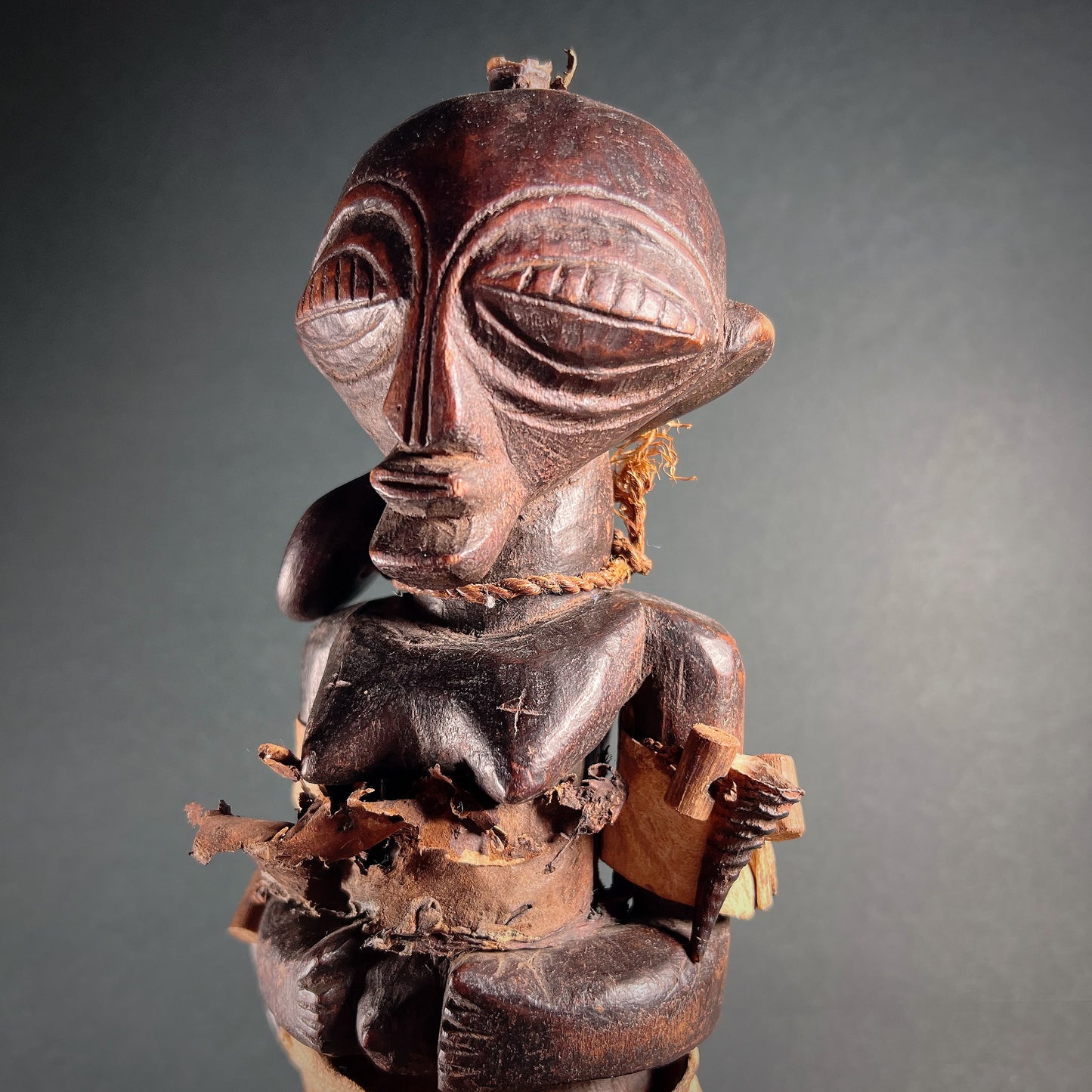
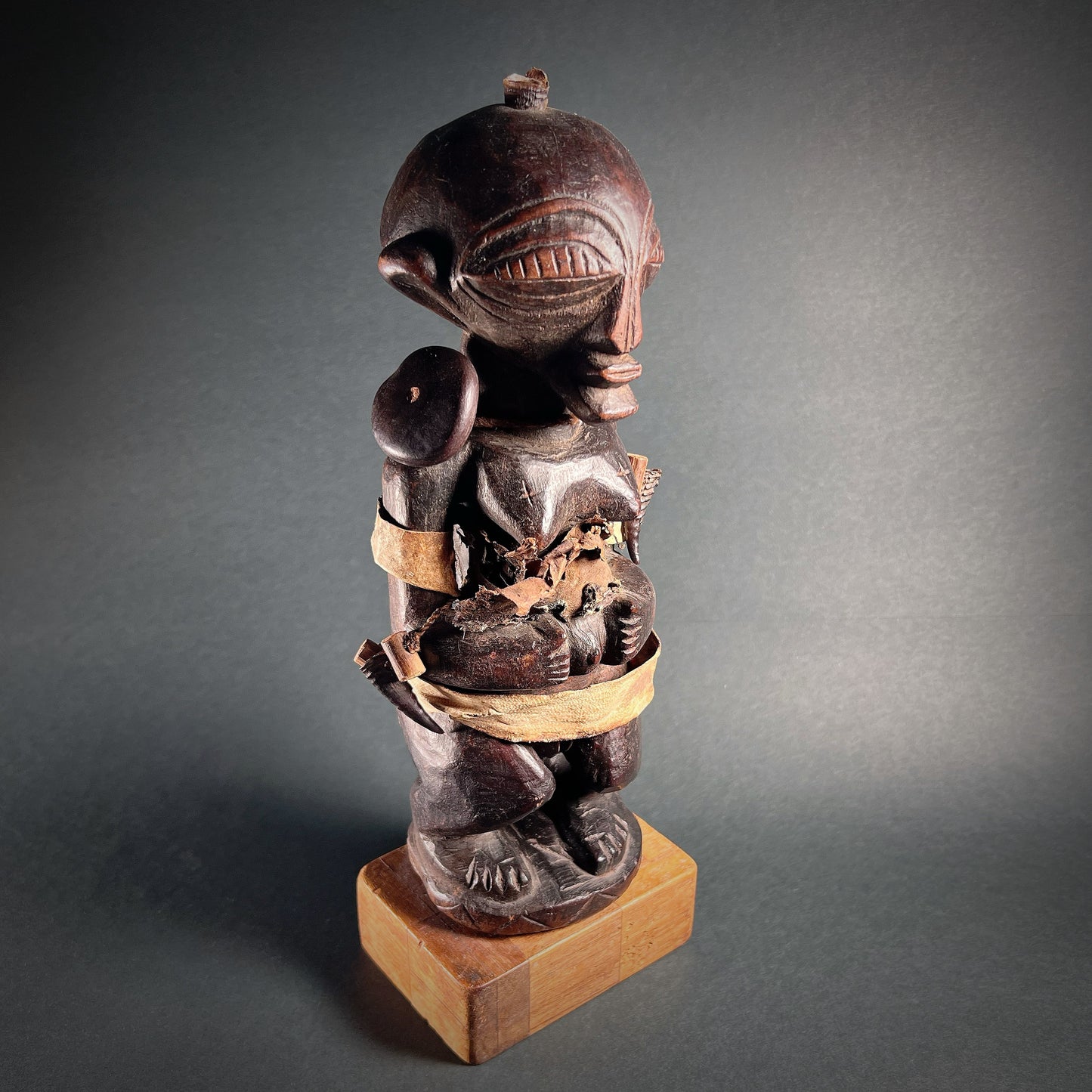
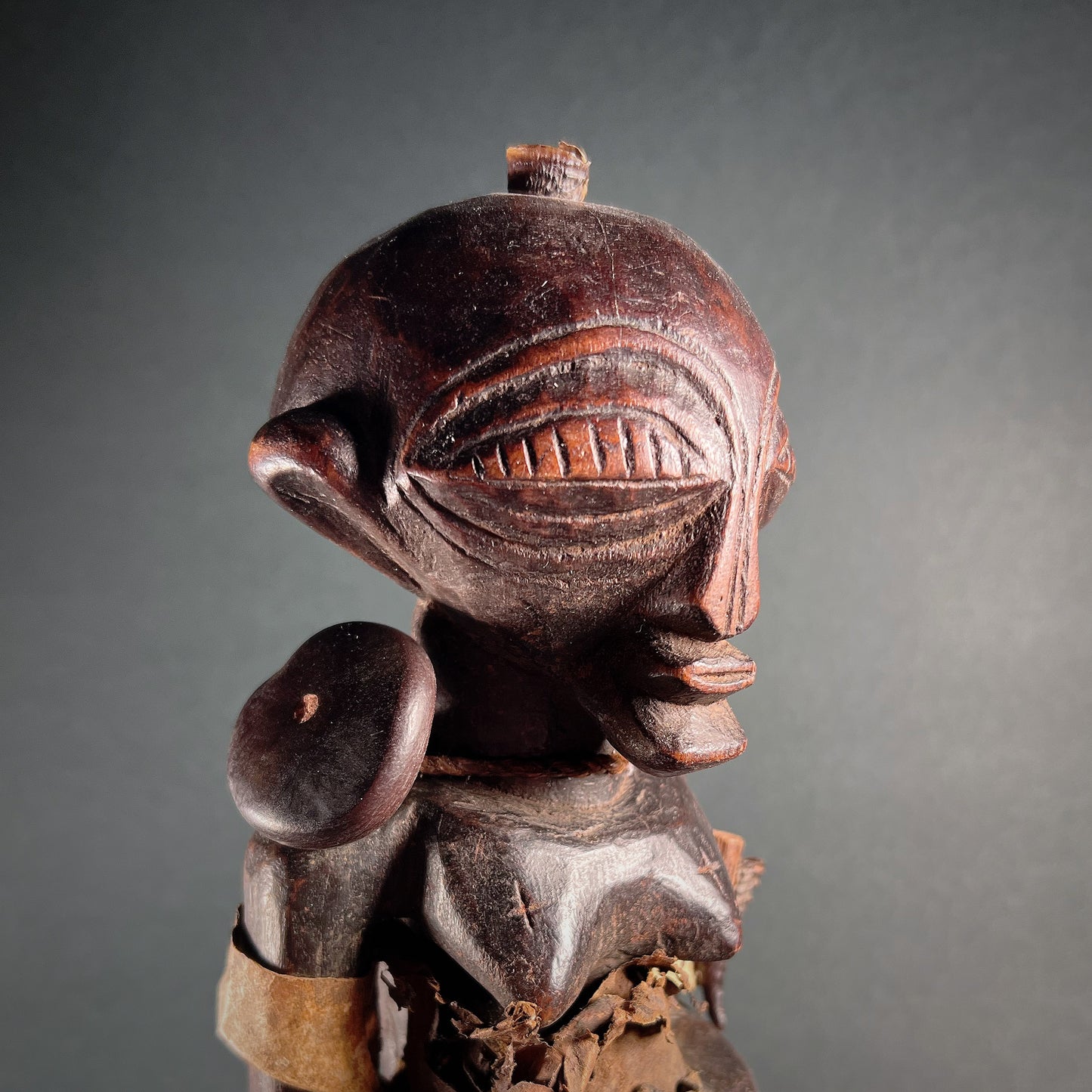
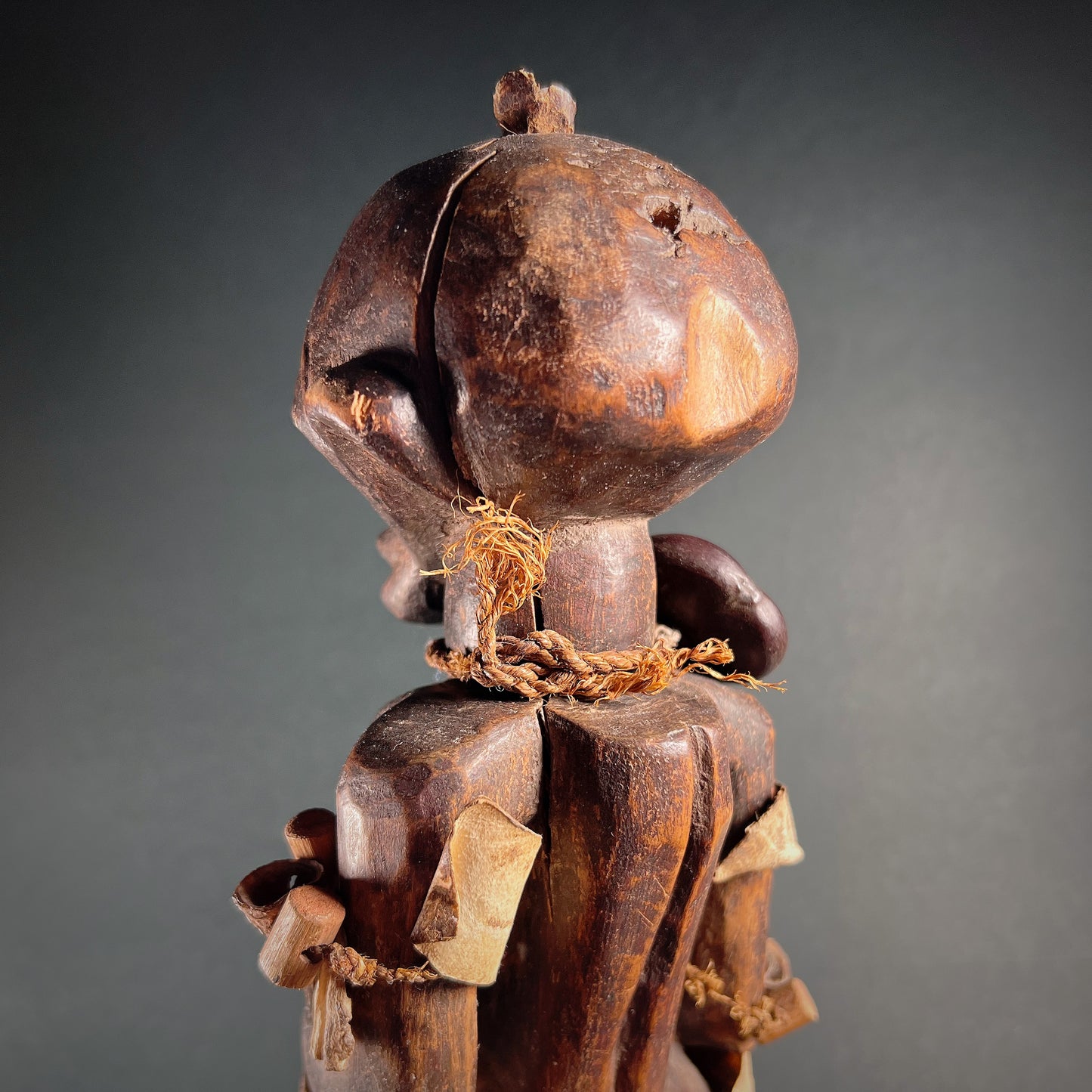
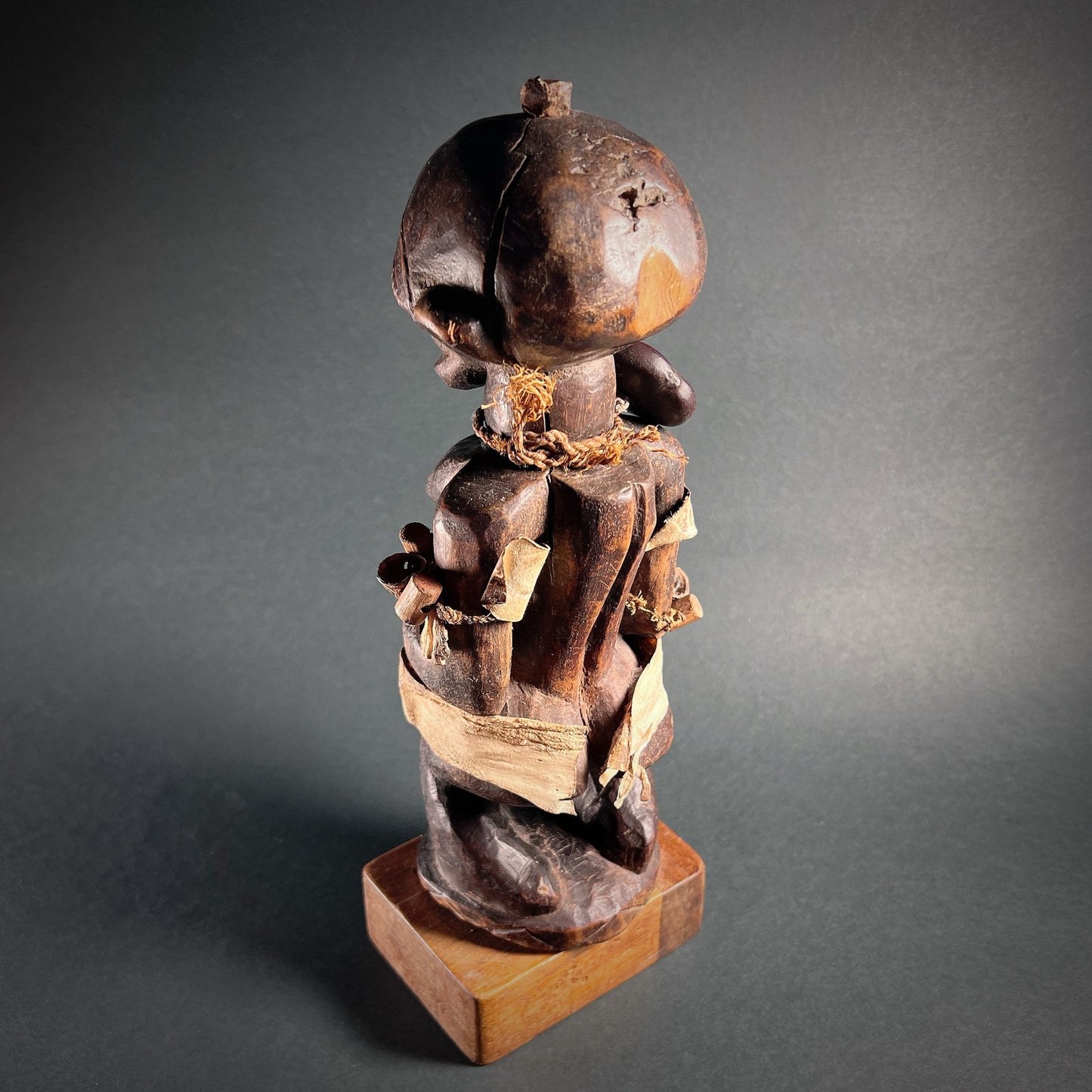
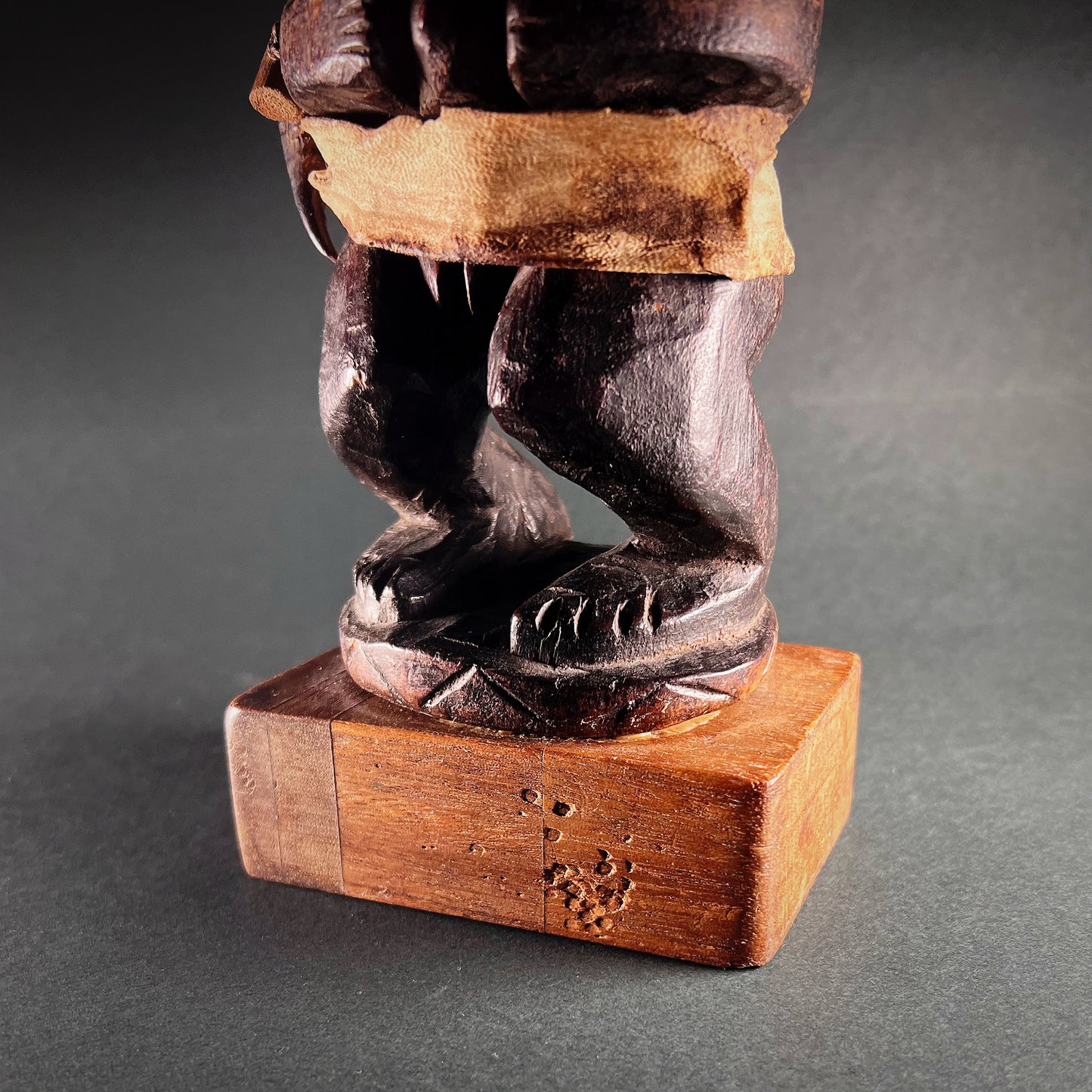
-
Shipping
The shipment will be prepared in the course of 3-5 days and dispatched via Posti Group Oyj or purchased item(s) can be picked up from our shop during the store's opening hours (Tarkk’ampujankatu 4, 00140, Helsinki, Finland). Within the Finland, all items are shipped via Posti Group Oyj unless otherwise requested. We pack the items carefully and mainly in recycled materials because we want to save nature. You will receive the tracking number for your items by e-mail.
-
Returns
Returns and exchange will be accepted within fourteen days (14) of receipt at the purchaser’s cost to include freight and packaging. Items must be returned in the same condition as when they were shipped, and will not be accepted if damaged or altered in any way. Please inform us via email (info@gotanmaailma.fi) or by calling +358408408352 before sending. We do not accept returns more than 14 days after delivery.
